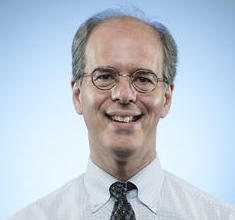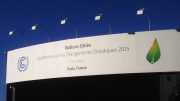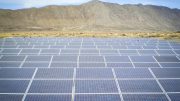 With Monday’s release of landmark rules to combat global warming, President Obama is putting into place what probably will be the last piece of his ambitious second-term agenda – one that highlights deep divisions in the country and helps shape the race to succeed him.
With Monday’s release of landmark rules to combat global warming, President Obama is putting into place what probably will be the last piece of his ambitious second-term agenda – one that highlights deep divisions in the country and helps shape the race to succeed him.
[…]
In the process, he has courted a backlash from Republican constituencies and states – an older, whiter population concentrated in the South and the nation’s interior. That division was plain to see in reactions to the new rules, which aim to change how the nation generates electricity in order to cut emission of carbon dioxide and other gases blamed for warming the world’s climate.
Over the next 15 years, the plan would aim to sharply reduce the use of coal and ramp up the use of wind and solar power. Currently, coal accounts for almost 40% of the nation’s electricity, while wind and solar produce about 5%. By 2030, if the administration’s plan works, renewables would account for 28% of U.S. power generation, edging past coal at 27%.
The plan would boost efforts already underway, mostly in coastal states, led by California, to greatly increase the use of renewable power. But for those parts of the country still heavily reliant on coal, nearly all of them Republican-governed states in the Midwest, Great Plains and South, the rules would force a major economic transition that many elected officials have vowed to resist.
Democratic presidential hopefuls quickly lined up to praise the plan. Republicans, who have accused the administration of waging a “war on coal,” attacked it.
Obama is scheduled to formally unveil the regulations on Monday, but administration officials released an outline on Sunday.
“Our country’s clean-energy transition is happening faster than anybody anticipated,” Environmental Protection Agency chief Gina McCarthy told reporters in a conference call. The new rules will accelerate those trends and maintain the reliability and affordability of the nation’s electrical supply while slowing climate change, she said.
The EPA will issue the rules using its authority under the Clean Air Act, meaning that Obama does not need to seek congressional approval. But opponents of the plan have already said they would try to block it in court.
[…]
Overall, the EPA estimates the plan will reduce emissions from the nation’s electrical industry by 32% compared with the level in 2005, which is the baseline the administration uses. Because electricity generation accounts for about one-third of U.S. carbon emissions, reductions from power plants would be a major step toward the administration’s goal of cutting total U.S. emissions by 26% to 28% over the next 15 years.
The EPA estimates that the rule will add $8.4 billion to utility costs over that period, but will yield at least four times that amount in benefits, said White House senior advisor Brian Deese. The utility industry already spends about $100 billion a year on plants and equipment, McCarthy noted.
Administration officials see the new rules as a significant enticement to get other countries to commit to reducing their greenhouse gas emissions in global talks. Negotiations are scheduled to convene in Paris in December with hopes of achieving a new international agreement on combating climate change.
But some environmental advocates say the administration’s plans are already too weak to stop the warming of the world’s climate. They are likely to carefully scrutinize the new plan for signs that the administration made too many concessions to industry. Major environmental organizations withheld most comment on the new plan Sunday, saying they needed time to study the details.
[…]
David Lauter
Full version is available
on Los Angeles Times
August 3, 2015






Be the first to comment on "Obama’s new emissions rules likely to help shape White House race"